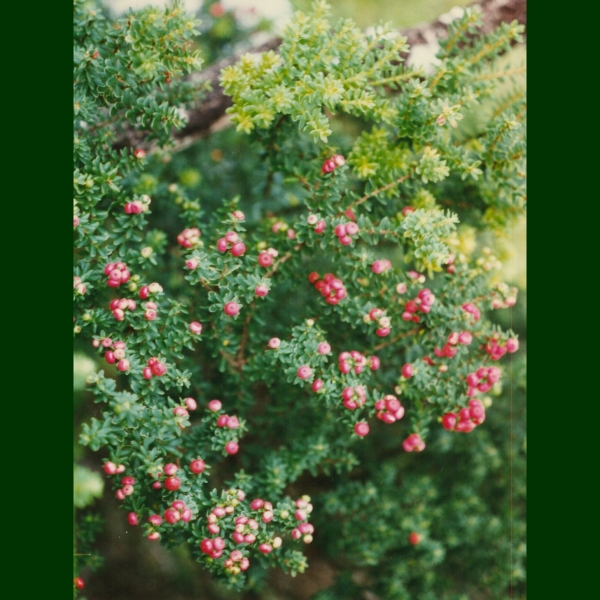 Hawaiian Name(s): pūkiawe, a‘ali‘i mahu, kānehoa, kāwa‘u (Lāni‘i, Maui), maiele, maieli, puakiawe, puakeawe, pūpūkiawe
Hawaiian Name(s): pūkiawe, a‘ali‘i mahu, kānehoa, kāwa‘u (Lāni‘i, Maui), maiele, maieli, puakiawe, puakeawe, pūpūkiaweScientific Name: Leptecophylla tameiameiae
Vernacular Name: none
Family: Ericaceae
Status: indigenous
Authority: (Cham. & Schlecht.) C.M.Weiller
Description: Shrubs.
Habitat Scattered to very common in mesic forest to open areas, low elevation to montane wet forest, to alpine shrublands and bogs rarely windward coastal sites 15–3230 m (Wagner et al. 1990:591).
Medicines: Leaves of the pūkiawe or ‘a‘ali‘i mahu are ground with salt, mixed with water, and inhaled through the nose to treat congestion (holopani upe nui) (Chun 1994:3–4).
Non Medicinal Uses: The fruit often used in lei (Abbott 1992:126); when ‘ali‘i wished to mingle with commoners (with no harm to them or himself), would be smudged with smoke from pūkiawe while kahuna chanted for "dispensation" (Degener 1930:247), "this is the plant that a person would burn to sancify the kapu of the chiefs" (Malo 1994:154); wood used for cremating bodies of outlaws (Little and Skolmen 1989:266); wood for kua kuku (kapa anvil) (Krauss 1993:62).
Specific gravity of wood: unknown
Famous Locations:
Mele:
`Ōlelo Noeau:
Dye Color and Parts:
Kino lau:
Location on Bishop Museum Kalihi Campus:
Propagation Information: Native Plants Hawaii.
Seed: Seed length approximately 3.5 mm. Photograph: B.Kennedy.

